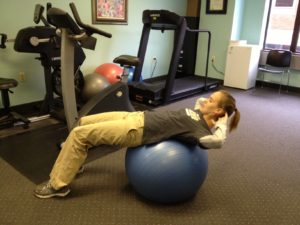Cooking for long periods of time can take a toll on your back. Here are some tips you can use to safely prepare your Thanksgiving meal without developing back pain.
When lifting the turkey, hold the pan close to your body as you take it to the oven. Bend at your knees, not at your lower back, as you lower it onto the oven rack. When taking the turkey out, bend at your knees and pull the rack out keeping your back straight while lifting the turkey out. Keep the turkey close to you. Pivot your feet without twisting your back, to bring the turkey to the counter top.
While peeling potatoes or slicing vegetables, you can prevent your back from hurting by either sitting down or by opening a lower cabinet door and setting one foot on the shelf. This takes weight off the back and prevents you from leaning forward as you work at the counter.
When you are cleaning up after your meal and putting things into the dishwasher, limit bending forward. Kneel down and have someone hand you the dirty dishes, or bend at the knees and keep your back straight while lowering plates to the bottom rack.

